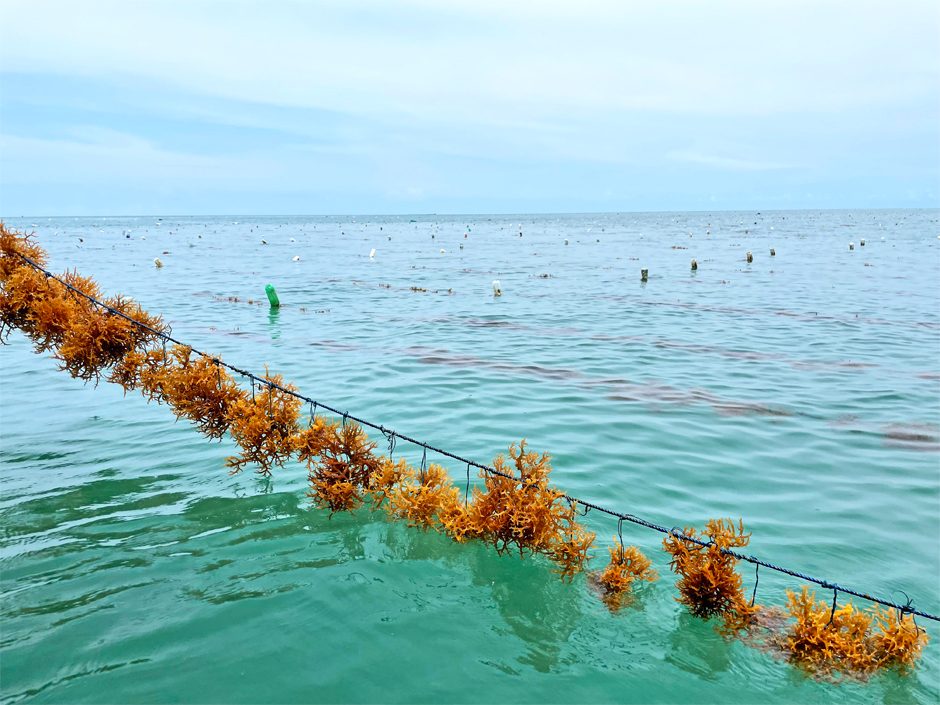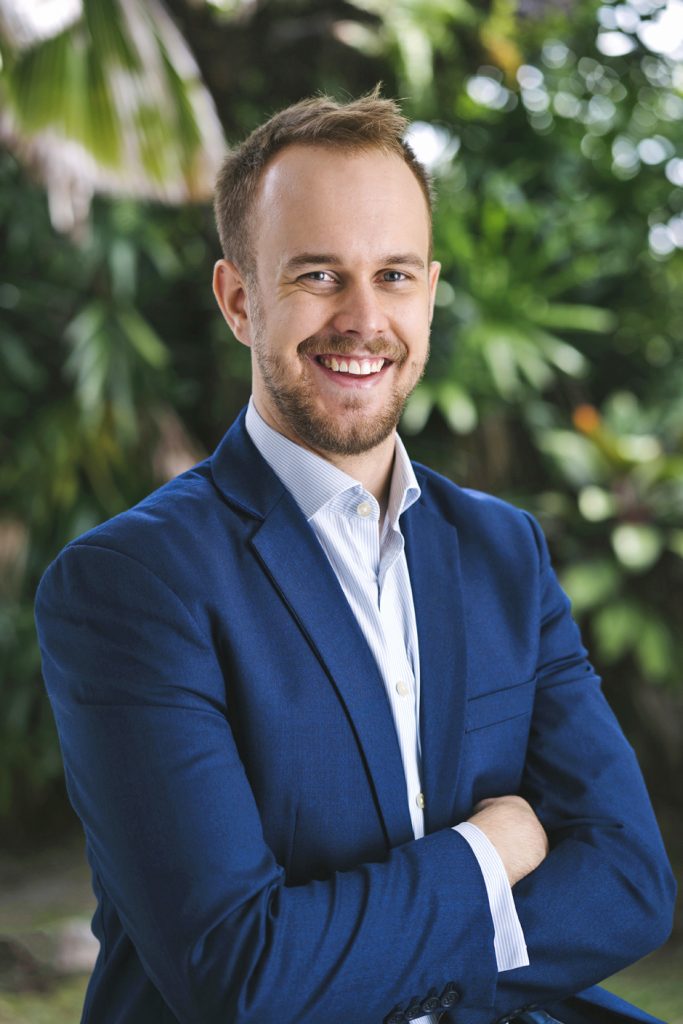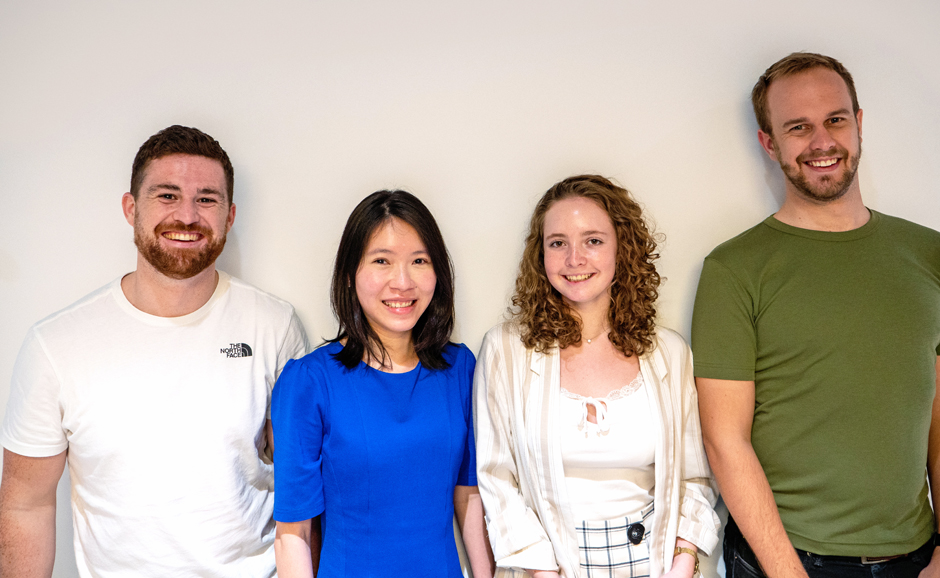Seaweed Farming and Blockchain Technology
With Aquaculture Innovator, Fred Puckle Hobbs
 (Credit: Dodon Yamin, MARI Oceans)
(Credit: Dodon Yamin, MARI Oceans)Based in Singapore, Fred Puckle Hobbs is the Chief Operating Officer of Sea Green, a start-up creating a digital platform to support seaweed farming.

Fred Puckle Hobbs (Credit: Sea Green)
What drew you to aquaculture?
I had spent three and a half years working in investment banking operations in Malaysia but started consulting for Asia Affinity in my spare time in mid-2020. Asia Affinity has a lot of projects that focus on sustainable aquaculture, including several opportunities in seaweed farming. After working with the team informally, I was offered the chance to be involved in Sea Green more permanently.
Seaweed is quite impactful environmentally, but it is also a vector for social change. For example, fishing is under considerable pressure and is significantly affected by climate change, ocean acidification and biodiversity loss have heavily impacted the industry. Seaweed farming is a way to fight against maritime environmental threats and has incredible ecosystem benefits that fishing lacks. For someone who has spent most of his career working on solving problems for people in financial services, Sea Green is a great fit. It allows me to look at sustainability and social change.
What does Sea Green do?
Sea Green works with MARI Oceans, a community-based seaweed farming company in Indonesia. Our mission is to create a digital platform with blockchain technology to support companies like MARI and other community-based seaweed aquaculture initiatives. MARI provides governance for farming seaweed and Sea Green’s technology is enabled through MARI’s on-the-ground frameworks. We want to connect everyone in the seaweed farming chain so that they can share information to achieve better, more efficient operations. The new platform is a data-gathering tool that will be free to download and use. The application will become an integral part of growing and harvesting seaweed, such as how farmers record data and how they are paid for their seaweed. Ultimately the new platform will be a resource to optimize farm management.
How does improved connectivity across the seaweed value chain benefit seaweed farming?
Improved connectivity links people in the value chain with data from different sources. We capture the data, create new insights and feed that into an operations department within Sea Green that looks at methods that could improve seaweed farming. The data might be information on supply chains, so people know what is being grown, where and how, or it could be information on water or crop quality. We can also license the data on a non-commercial basis to partners helping us with our research or commercially to financial services. Previously considered risky, seaweed farming hasn’t had enough data available for financial services to read the risk of a particular investment or understand the credit history of an individual who might be looking for a loan. We hope that, through our platform, we can share data and bring in banks and insurance companies to de-risk the seaweed sector.
Blockchain technology provides an immutable ledger–or data that cannot be altered–that supports all operational data, including environmental monitoring, online payments and product traceability. We collect data from all stakeholders within and outside the seaweed value chain and record it into the blockchain. Sea Green’s R&D department creates insights based on the data and provides a solution for the stakeholders’ existing needs.

(Credit: Dodon Yamin, MARI Oceans)
What developments are Sea Green likely to witness that will help to improve seaweed farming?
One of the most significant developments is integrated multi-trophic aquaculture (IMTA), which is the co-cultivation of seaweed alongside other trophic organisms (e.g. finfish, shrimp, mussels, sea-cucumbers) to improve efficiency, reduce waste and provide ecosystem services. Recently, we have begun to investigate an opportunity to farm blue swimmer crab alongside seaweed in Indonesia and the Philippines as a first step to integrating IMTA systems into farmer practices. Co-cultivation makes seaweed farms more efficient in providing food and more sustainable. IMTA is a clear game-changer for the local environment and food security globally.
What’s the best thing about your job?
It’s immensely satisfying to solve a problem and work out where something needs to be done. The seaweed industry is also very collaborative, and the enthusiasm for having conversations and making a difference is huge. We are very lucky to work in an ever-changing industry and with a dynamic group of people.
What is the biggest achievement you have accomplished at Sea Green?
I’m very proud of our ability to present a solution that resonates so well with such a diverse group of people. A lot of credit is due to the seaweed farmers we work with in South Sulawesi, our colleagues at MARI who are looking at how they can build this solution from the ground up and our external partners. A holistic solution is only possible through cross-sector and cross-regional collaboration.
 From left to right: Paddy Tarbuck, Tris Chen Xinmin, Mirabelle Adams, Fred Puckle Hobbs (Credit: Sea Green)
From left to right: Paddy Tarbuck, Tris Chen Xinmin, Mirabelle Adams, Fred Puckle Hobbs (Credit: Sea Green)
What are some of the challenges you face, and how are you working to address them?
One is helping people understand the need for a holistic solution. Multiple vested interests are at play in a value chain like seaweed farming, meaning that many different groups are working toward seemingly different goals. The second is that projects like ours must align with investment opportunities for growth. Many people in the investment space and the impact side want to make a difference, but the communication channels don’t exist at this stage.
The key to succeeding in seaweed farming is to be incredibly collaborative ourselves. You must have tough conversations and push hard for things you feel need to be done in a certain way, but that is part of the challenge. For Sea Green, our commitment to facing our challenges and not being swayed from our vision is critical to development.
What are Sea Green’s future goals?
Our aim is to deploy the digital platform and for it to be generating revenue in 2023. We are looking at 25,000 users within five years, hopefully across multiple territories, generating income to reinvest into the seaweed value chain for seaweed farmers. We would also like to be a part of anything that uplifts seaweed as a realistic solution to climate change and a part of the solution for food insecurity.



Pingback: Fishsens Magazine Features Sea Green as Aquaculture Innovator – Sea Green